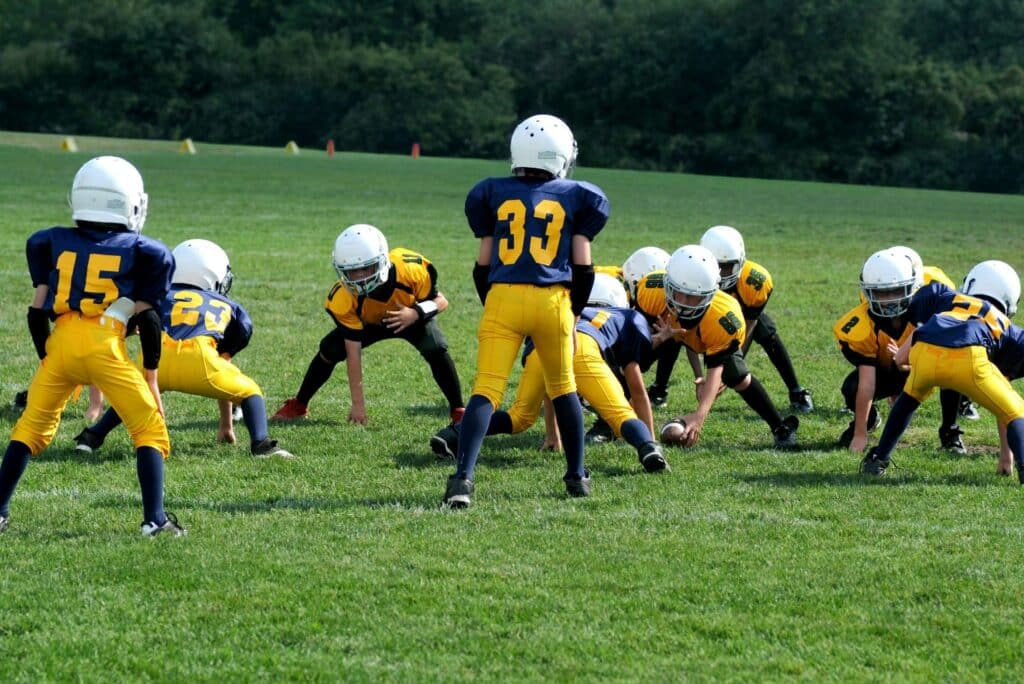When deciding whether to let their children participate in youth tackle football, parents face a range of complex considerations. While the sport offers undeniable physical and emotional benefits like teamwork, discipline, and physical fitness, it also carries potential risks, including injuries and long-term health concerns such as concussions.
Physical Benefits of Youth Tackle Football
Youth tackle football provides children with significant physical advantages. From improving cardiovascular health to building strength and endurance, participation in the sport contributes positively to overall fitness. Regular practice and games enhance motor skills, coordination, and agility, all of which are vital for physical development during formative years.
Playing football requires intense physical exertion, which promotes cardiovascular fitness. Practices involve repetitive drills that improve endurance and stamina. Strength training, integral to the sport, builds muscular power, especially in the legs, arms, and core.
Football also enhances hand-eye coordination and reflexes. Drills focusing on ball-handling and quick decision-making teach children to react swiftly, improving their motor functions and overall agility.
Emotional Benefits of Youth Tackle Football
Beyond physical fitness, football instills valuable emotional traits in young players. It fosters teamwork, builds discipline, and boosts confidence through achievements and overcoming challenges.
Football is a team sport requiring cooperation and trust among players. This dynamic encourages children to communicate effectively and work collectively toward shared goals. The bonds formed often extend beyond the field, creating lasting friendships.
The sport emphasizes structured routines and the importance of adhering to rules. Overcoming setbacks—such as losing games or learning from mistakes—teaches resilience, preparing children for challenges in life.
Risks Associated With Youth Tackle Football
Despite its benefits, tackle football presents risks, particularly in terms of injuries and long-term health effects. Concussions and repetitive head trauma are significant concerns for parents.
Studies link tackle football to an increased risk of concussions, which can have both immediate and long-term effects on cognitive function. Symptoms include headaches, memory loss, and in severe cases, chronic traumatic encephalopathy (CTE).
Sprains, fractures, and ligament tears are common among youth football players. Parents must weigh these risks against the physical benefits when making their decision.

Here is a comparative image showing a normal brain alongside a brain affected by Chronic Traumatic Encephalopathy (CTE). The differences highlight the shrinkage and damage often associated with CTE.
Safety Measures in Youth Tackle Football
Organizations like Pop Warner have introduced various safety initiatives to mitigate risks and protect young athletes. These measures focus on training techniques, equipment improvements, and game regulations.
Pop Warner emphasizes age-appropriate tackling techniques to reduce head impacts. Coaches receive specialized training to teach proper form and safety protocols.
The organization has invested in advanced helmets and padding designed to absorb impact. Regular equipment checks ensure the gear meets safety standards.
The Role of Parents in Decision-Making
Parents play a pivotal role in determining whether tackle football aligns with their child’s interests and physical capabilities. Informed decision-making requires evaluating both risks and benefits.
Parents are encouraged to consult pediatricians and sports specialists to assess their child’s readiness for tackle football. Understanding individual health risks is crucial.
Engaging with coaches to discuss safety measures and training methodologies can provide valuable insights into program quality.
Alternatives to Tackle Football
For parents seeking lower-risk options, alternatives like flag football offer many of the same benefits without physical contact.
Flag football eliminates tackling, significantly reducing the risk of injuries. The game still promotes teamwork, discipline, and fitness.
Sports such as soccer, basketball, or swimming can also provide physical and emotional benefits, giving parents a range of choices.
Broader Impact of Youth Sports

Participation in any sport contributes positively to a child’s development. Football is no exception, offering opportunities for skill-building and confidence growth.
Successes on the field can translate into improved self-confidence, encouraging children to take on challenges in other areas of life.
Team interactions teach children to navigate social dynamics, fostering leadership qualities and empathy.
The Cultural Allure of Football
Despite safety concerns, football remains deeply embedded in American culture, attracting millions of fans annually.
The NFL’s enduring appeal influences children’s interest in tackle football, creating challenges for parents who may have reservations.
Despite growing awareness and information about concussions, the popularity of football, particularly the NFL, continues to thrive both domestically and internationally. This enduring appeal makes it increasingly difficult for parents to dissuade children from wanting to participate in tackle football.
The excitement and festivities surrounding football games, combined with the rise of legalized sports betting—which allows fans, including parents, to add stakes to the action—only heighten the sport’s allure.
Learn more about these betting opportunities here. In recent years, states like Missouri and others have implemented several initiatives to enhance safety in youth football. The Missouri Athletic Trainer’s Association (MoATA) launched the “Safety in Football Campaign,” aiming to reduce injuries and promote best practices among youth football programs.
Making the Final Decision
Parents must balance the sport’s benefits with its risks to make the best decision for their child. Involving children in the decision-making process ensures that their interests and concerns are addressed.
Prioritizing medical consultations and adhering to safety guidelines can help minimize risks while maximizing the benefits of participation.















